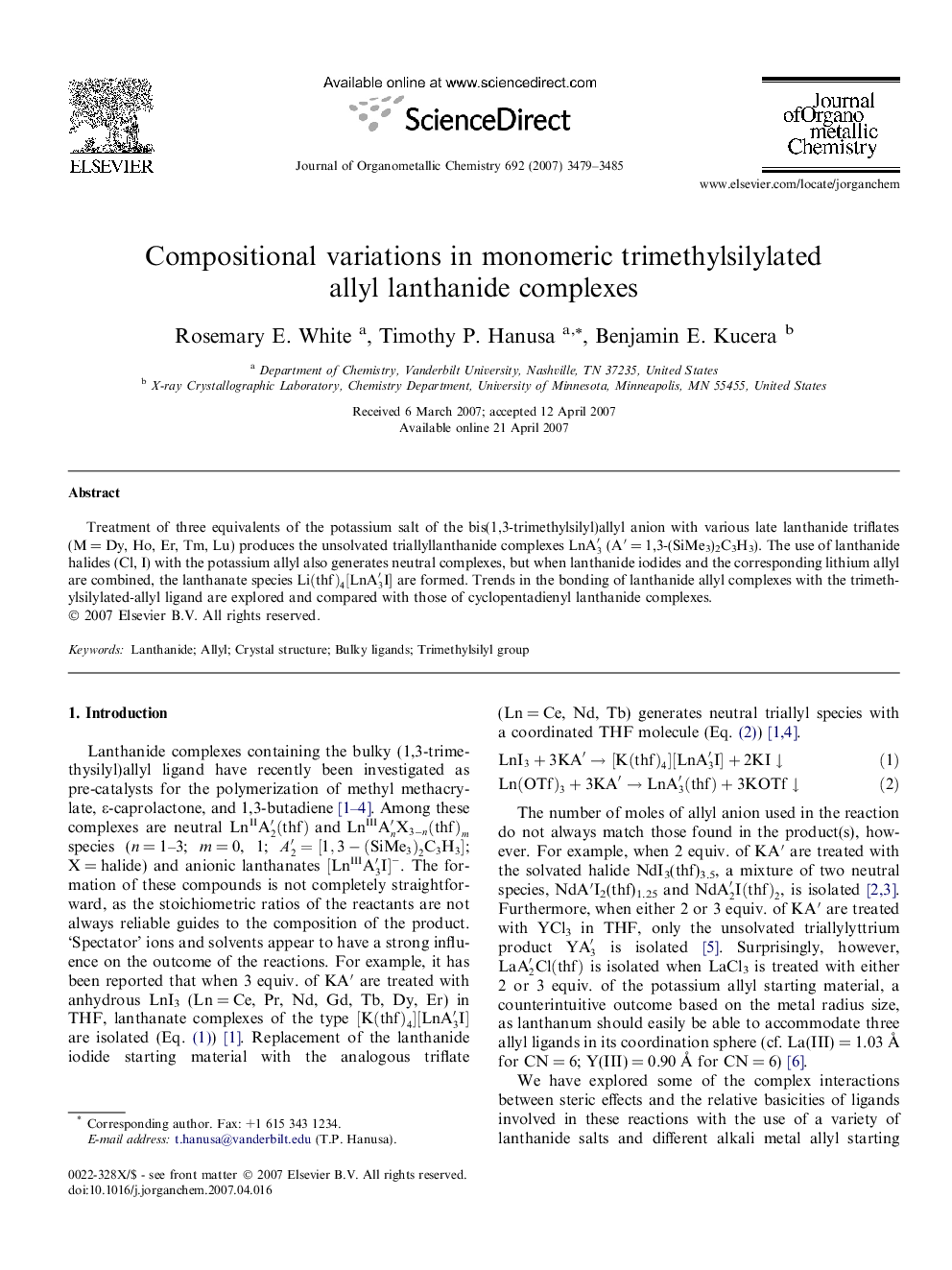| Article ID | Journal | Published Year | Pages | File Type |
|---|---|---|---|---|
| 1326590 | Journal of Organometallic Chemistry | 2007 | 7 Pages |
Treatment of three equivalents of the potassium salt of the bis(1,3-trimethylsilyl)allyl anion with various late lanthanide triflates (M = Dy, Ho, Er, Tm, Lu) produces the unsolvated triallyllanthanide complexes LnA3′ (A′ = 1,3-(SiMe3)2C3H3). The use of lanthanide halides (Cl, I) with the potassium allyl also generates neutral complexes, but when lanthanide iodides and the corresponding lithium allyl are combined, the lanthanate species Li(thf)4[LnA3′I] are formed. Trends in the bonding of lanthanide allyl complexes with the trimethylsilylated-allyl ligand are explored and compared with those of cyclopentadienyl lanthanide complexes.
Graphical abstractThe composition of lanthanide complexes formed from alkali metal derivatives of the bis(1,3-trimethylsilyl)allyl anion and lanthanide salts varies with the stoichiometry of the reagents and the identity of counterions. The metal–allyl distances in the complexes correlate reasonably well with the metal radii, consistent with primarily ionic bonding.Figure optionsDownload full-size imageDownload as PowerPoint slide
